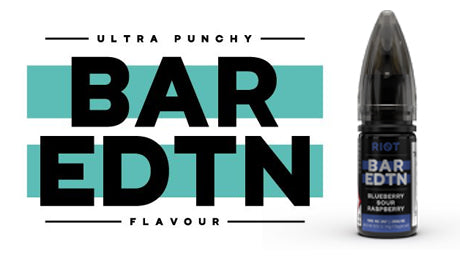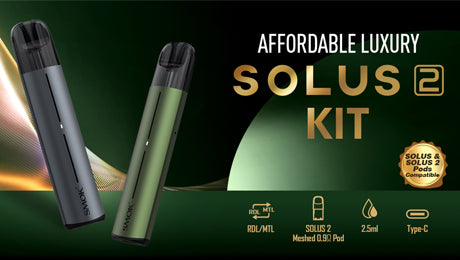Vaping to Quit Smoking

There's some confusion and misleading information about vaping, which can make it difficult to work out what's true or not.
Nicotine vaping is substantially less harmful than smoking. It's also one of the most effective tools for quitting smoking.
Vaping is not recommended for non-smokers and young people because it is not completely harmless.
Here you will find the facts on vaping, based on scientific evidence and research, plus advice on how to use vapes (sometimes called e-cigarettes or e-cigs) as a tool to quit smoking.
How vaping can help you quit
Vapes are electronic devices that let you inhale nicotine in a vapour instead of smoke. This is done by heating a solution (e-liquid) that typically contains propylene glycol, vegetable glycerine, flavourings and nicotine.
E-liquids come in different nicotine strengths, so you control how much nicotine you need to help with cravings and other withdrawal symptoms, such as feeling irritable and having low mood.
Nicotine itself is not very harmful and has been used safely for many years in medicines to help people stop smoking.
Help break the routines of smoking cigarettes
The routines and rituals of smoking can be hard to stop, so vaping can help you gradually let go of these while immediately reducing the health risks of smoking cigarettes.

Some people find vaping helps them because the hand-to-mouth action is like smoking, plus you get similar sensations, like throat hit (the "kick" in the back of your throat when you inhale).
Any smoking is harmful and you will only get the full benefits of vaping if you stop smoking completely. Some people manage to make a full switch very quickly, while for others it can take a bit longer.
Vaping devices and e-liquids
There are a variety of vapes including:
- vape bars shaped like a highlighter pen (usually disposable but sometimes rechargeable and refillable with e-liquid capsules)
- compact pod devices shaped like a flash drive or pebble (either disposable, or rechargeable and refillable with e-liquid capsules)
- vape pens with a tank you fill with your choice of e-liquid, and a replaceable coil and rechargeable battery
- "cigalikes" designed to look like a cigarette (either disposable, or rechargeable and refillable with e-liquid capsules)
- customisable devices with variable power (these are more difficult to use and need more maintenance)
Which vape is best to quit smoking?
A vape bar, pod device or vape pen are good choices, as they are discreet, make small clouds and can give high amounts of nicotine. Starter kits come with a range of flavours.
It's important to choose an e-liquid with the right strength of nicotine to satisfy your individual needs. You need to start at a nicotine level that matches your cigarette use – how frequently and how much you smoke. A specialist vape shop or your local Stop Smoking Service can advise you.
Whichever vape you choose, make sure you use it regularly.
Where to buy vapes
You can buy them from specialist vape shops, some pharmacies and other retailers, or on the internet.
Make sure you buy your vaping products from a reputable retailer so you can be confident they are covered by UK safety and quality regulations.
So far, no vaping products have been licensed as stop smoking medicines in the UK, so they are not available on prescription from the NHS or from a GP.

Expert stop smoking support
Vaping is particularly effective for quitting if you get expert help from your local Stop Smoking Service.
They can give advice about the right device and nicotine strength for you, how to use a vape, plus extra support to help you succeed. Some services also offer free vaping starter kits.

Vaping side effects
Common side effects of vaping include:
- coughing, dry mouth and throat
- mouth and throat irritation
- shortness of breath
- headaches
If you experience side effects from vaping, get advice from a stop smoking adviser or specialist vape retailer before you decide to stop using a vape as your quit smoking tool.
Making small changes to your vape products or how you vape should help. Side effects are usually easily managed and should not stop you from vaping as a way to quit smoking.
Becoming vape-free
Once you have been vaping for a while and feel sure you will not go back to smoking, you can aim to quit vaping too. Many vapers find they get to this stage after about 12 months.
There are a couple of ways to try to quit vaping:
- reduce your frequency of vaping over time
- gradually reduce the strength of nicotine in your e-liquid
Do not rush this step. Only reduce your vaping frequency or nicotine strength when you feel you will not go back to smoking and do not have to puff more to compensate.
Is vaping harmful?
Experts agree vaping is substantially less harmful than smoking but it is not risk-free. Vaping exposes users to fewer toxins and at lower levels than smoking cigarettes.
Switching to vaping significantly reduces your exposure to toxins that can cause cancer, lung disease, and diseases of the heart and circulation like heart attack and stroke.
Long-term effects of vaping
Vaping has not been around for long enough to know the risks of long-term use. This includes the long-term effects of inhaling the flavourings in vapour. While vaping is substantially less harmful than smoking, it is unlikely to be totally harmless.
If you do not smoke, do not start vaping.

Vaping versus smoking
Cigarettes release thousands of different chemicals when they burn. Many are poisonous and up to 70 cause cancer.
Toxins in tobacco smoke can also cause other serious illnesses, including lung disease, heart disease and stroke.
Vaping exposes users to far fewer toxins than cigarette smoking, and vapes do not produce tar or carbon monoxide, 2 of the most harmful substances in tobacco smoke.
Secondhand smoke and vaping around others
While secondhand smoke from cigarettes causes serious harm to others, there is no evidence so far that vaping is harmful to people around you.
But as a precaution, it is best not to vape around babies and children if you can avoid it. Young children often copy what adults do.
Always be considerate when vaping around anyone else, especially people with health conditions like asthma or other respiratory conditions, or people who do not like vaping.

Are vapes safe to use in pregnancy?
There is little research on the safety of vaping in pregnancy, but it's likely to be substantially less harmful for you and your baby than smoking.
If you're pregnant and need support to quit smoking, licensed nicotine replacement therapy products like patches and gum are the recommended option.
But if you find vaping helpful to quit and to stay smoke-free, it is much safer for you and your baby than continuing to smoke.
The most important thing is to not smoke when pregnant or around pregnant women.
Speak to a midwife or a stop smoking adviser for advice and support.
How to vape safely
Reports of vapes exploding or catching fire are very rare, but always take care to reduce any risks by:
- buying a vape from a reputable retailer, so you can be sure it is covered by UK safety regulations
- using the right charger and not leaving a vape charging unattended or overnight
- keeping a vape and e-liquid out of the reach of children and pets, as there is a risk of poisoning if nicotine is swallowed
Young people and vaping
While vaping can help smokers quit, it is not harmless and is not for young people under 18. It is especially important to protect young lungs and brains.
That's why there's a minimum age of sale for vaping products in the UK. It is illegal to sell nicotine vaping products to anyone under 18 or for adults to buy them on behalf of under-18s.
Talking to young people about vaping
It's important for young people to know the facts about vaping so they can make an informed choice.
Parents, carers and anyone working with children can make sure young people understand the health facts about vaping and know about vaping and the law.
Facts to tell young people about vaping:
- Vaping is a way for adults to stop smoking – not something for non-smokers, especially children and young people to try.
- Vaping is substantially less harmful than smoking but that does not mean it is harmless.
- In the UK, it is against the law to sell nicotine vaping products to under-18s or for adults to buy them on their behalf.
- Vaping exposes users to some toxins, and we do not yet know what the risks might be in the longer term.
- Some vapes contain nicotine, which is an addictive substance that can be hard to stop using once you have started.
- Nicotine may be more risky for young people than for adults, as evidence suggests the brain in adolescence is more sensitive to its effects.
- Some disposable vapes on sale are illegal and do not meet UK quality and safety regulations.
NHS Article Source: Vaping to Quit Smoking





Leave a comment